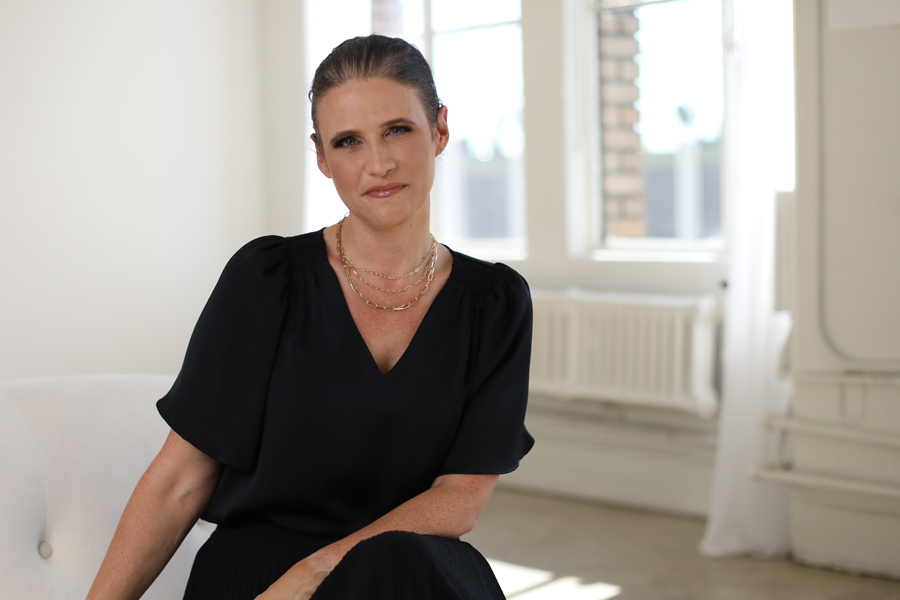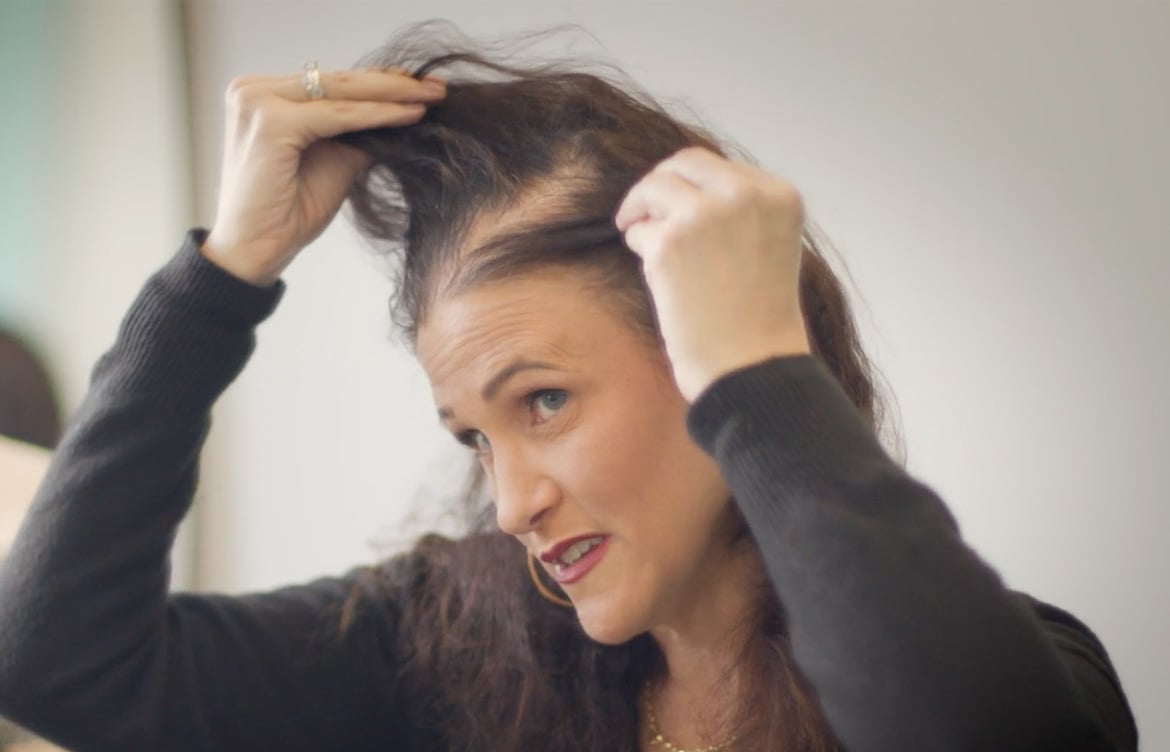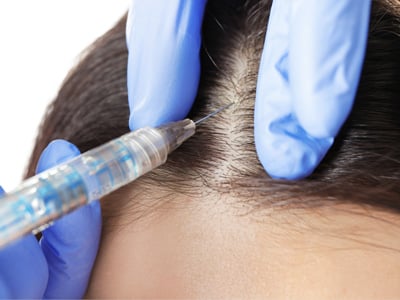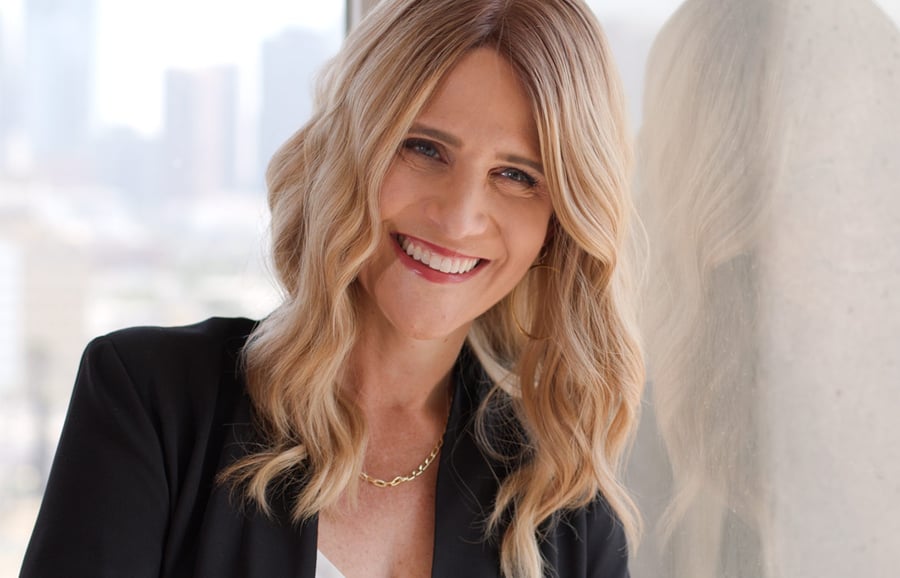My Experience with PRP for Hair Loss - By Barb Betts

Does hair loss have a stranglehold on your life?
Have you been searching for an effective solution to thinning hair that lasts, but you’re quickly running out of options?
Perhaps you’re wanting to leave no stone unturned in the quest to conquer your hair loss once and for all.
We’ve worked with women who’ve tried it all.
By the time they come to us to get matched with an exquisitely natural-looking human hair wig, our customers have often exhausted every option and tried every available topical treatment, shampoo, vitamin, or diet to improve their hair loss. Some try more invasive procedures such as PRP therapy to treat their thinning hair. When nothing else works, human hair wigs are a beautiful, luxury alternative to suffering the trauma of a thinning crown or bald patches.
When one of our real-life customers, Barb Betts, made an appointment for a consultation at Daniel Alain, she had tried everything to cure her thinning hair. Barb was diagnosed with Hashimoto’s (an autoimmune disorder) and androgenetic alopecia, and when root powders no longer concealed her visible scalp, she even tried PRP therapy through her dermatologist.

If you’ve heard about PRP therapy and are curious about what it’s like to go through the treatment process, read on! By sharing Barb’s first-hand experience, we hope you’ll have a better understanding of the process and decide whether it’s a good option for you.
What is PRP for hair loss?

PRP stands for ‘platelet-rich plasma’. PRP therapy is commonly used to treat sports injuries because it’s known to promote fast and effective healing for muscles, tendons and ligaments. Though it’s relatively new to being used in the hair loss industry, an increasing number of dermatologists are finding PRP therapy useful to treat the symptoms of androgenetic alopecia. PRP can boost blood supply to the hair follicles and thicken the shaft.
“In my hair loss journey, I was looking for any solution that I could find to help me,” says Barb. “After searching the internet and reading a lot of articles, I sought advice from my dermatologist who prescribed a course of PRP treatments.”
Barb’s dermatologist took a blood sample from a vein in her arm and placed it into a centrifuge machine that spun rapidly to separate out the layer of platelet-rich plasma from the other components. The blood rich in plasma was then injected into targeted areas on Barb’s scalp.
“They put the plasma into one large syringe and at the end of the syringe is an attachment that has about 25 needles attached to it. They then take that and put it on top of your scalp and inject it all over the affected area. And for me, that was a very large area.”
How much does PRP for hair loss cost?
In general, PRP treatments can cost anywhere from $1,500 to $3,00 per session. Patients typically see optimal results after three to six sessions, but further treatments will likely be required every three to six months to maintain results.
While Barb was prepared to invest whatever she could to grow back her hair, her dermatologist was realistic and could offer no guarantees PRP would work. “PRP is very, very expensive. Quite honestly, I could have bought two or three human hair Follea wigs with the money I spent,” sighs Barb.
Does PRP for hair loss work?
“Initially, the results were really good,” says Barb. “The hair did grow back.”
Unfortunately, not everyone will see positive results from PRP therapy. PRP treats the symptom of androgenetic alopecia, not the diagnosis itself. For some people, particularly those with chronic conditions and thyroid imbalances like Barb, the hair will continue to fall out.
“I had to go about every four months to have the procedure done by my dermatologist. It’s really hard to determine exactly how long it takes for the hair to grow back. But within about a year and a half, my hair had grown back about four to six inches.”
How long do results from PRP for hair loss last?
Everyone’s experience with PRP will differ and results will vary. Barb was delighted and hopeful when she saw her hair growing back. She would inspect it proudly in the mirror and felt positive about progressing toward a full head of hair. Celebrating new regrowth after years of mourning hair loss was a welcome change. She finally felt like she had found the cure she had been looking for. After 18 months of regular, painful, and very expensive injections to her scalp, Barb was euphoric with four to six inches of new growth.
Unfortunately, for Barb, the new hair wouldn’t last.
“Within four to six months, I noticed that all the new hair growth had gone,” Barb recalls wistfully. “I actually went back in to see my dermatologist and she was honest with me. She said ‘I can’t keep charging you money to do this. It’s not working’.”
Is PRP for hair loss right for you?
When considering whether PRP therapy is right for you, Barb is quick to recommend exploring all available options. You may stumble upon something that helps, and some people like to know they’ve tried everything. “Anyone looking into PRP should consult a medical professional that they trust,” she advises. “I trusted my dermatologist and I feel like if I hadn't tried PRP therapy, I would never have known if it would have worked. I would have always questioned myself.”
Barb listened to her doctor’s advice and trusted her to give her an accurate assessment of her hair loss reality. When her dermatologist advised against further PRP treatments, Barb realized it was time to draw a line under the experience.
Finding human hair wigs

After ending her experience with PRP, Barb sought advice from a surgeon about having a hair transplant. But with no guarantee of long-term success, she ruled it out. Knowing she had explored and researched every available option to regrow her hair brought her peace of mind, but she was still left with thinning hair.
“Nothing was working and I knew that it was time to try something new,” says Barb.
Barb was finally ready to explore wearing hair.
Barb focussed her attention on finding the best human hair wigs available and discovered Follea human hair wigs by Daniel Alain. With support from her daughter, Barb’s wig-buying journey ultimately ended in finding the hair of her dreams. The hair she wished she had always had.
These days Barb shares her experience of hair loss and wig-wearing with her followers online. Her wigs bring her a confidence and self-assuredness she didn't realize was possible. They’ve even helped her come to terms with her hair loss and she doesn’t mind who knows she’s wearing a wig.
“I was living behind walls that I had held up around me because I was ashamed of my hair loss. I think if I were to do it all over again, I wouldn’t wait as long. I would have listened to that inner voice that was letting me know this hair loss is not going to stop. I think I would have learned that wearing wigs is not a stigma. It can be your own journey.”
Are human hair wigs a good option for you?
We’ve noticed that many women remain in a state of flux while hoping they’ll find an effective and long-term cure for hair loss. Pouring hopes and expectations into treatments that can’t always produce the results they promise.
Human hair wigs offer a definitive solution to hair loss.
If you feel like you’ve exhausted all other available options, and you’re thinking a human hair wig might be a good choice for you, the consultants at Daniel Alain are here to help. Do you want to take control of the hair loss that’s been plaguing you? Booking a consultation with one of our stylists is a great way to find out more about human hair wigs. They will be able to address your concerns and answer any questions you have.

.jpeg)
